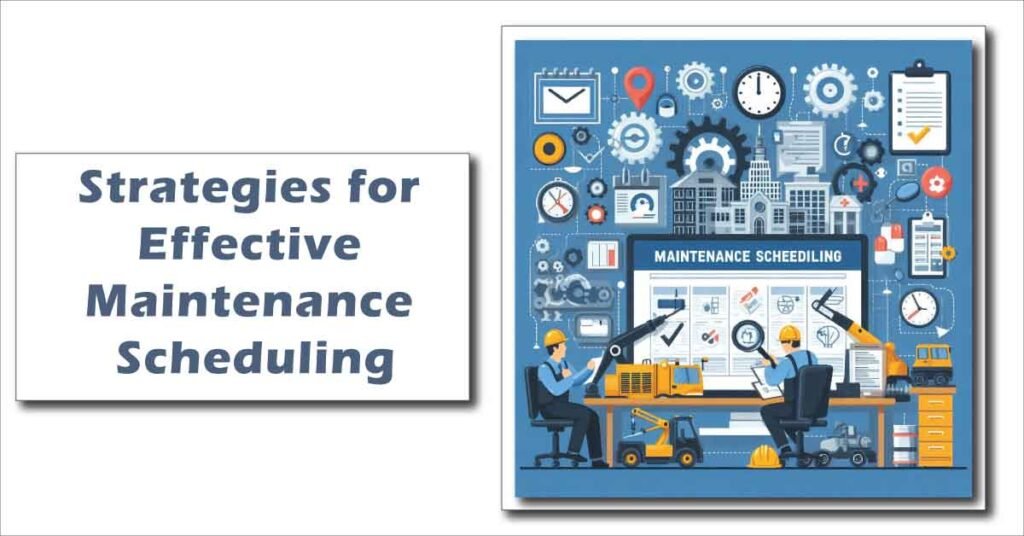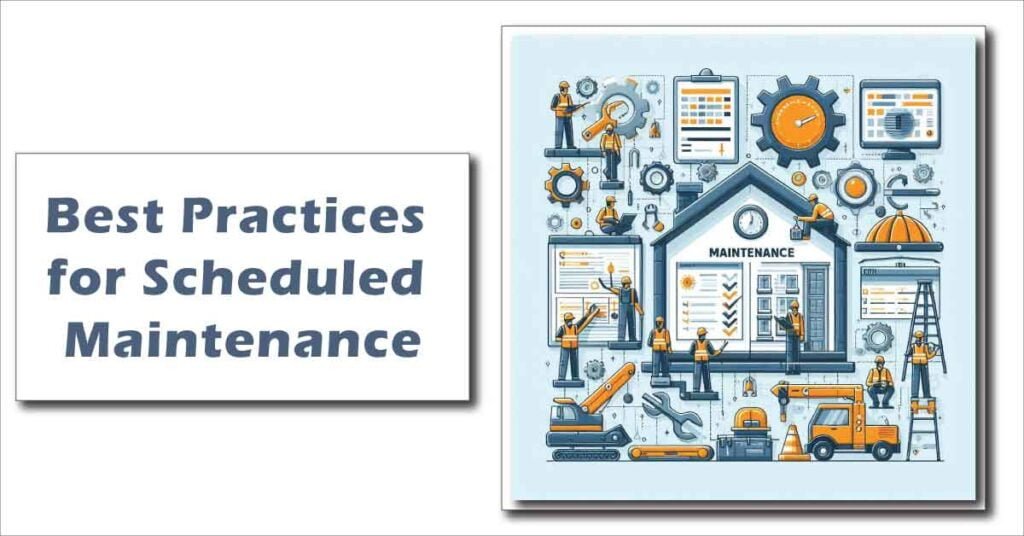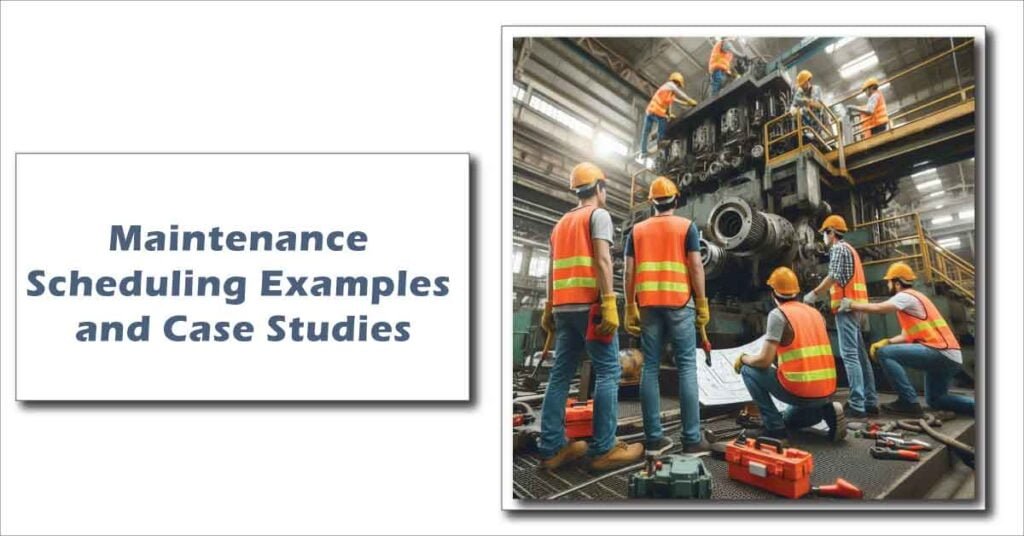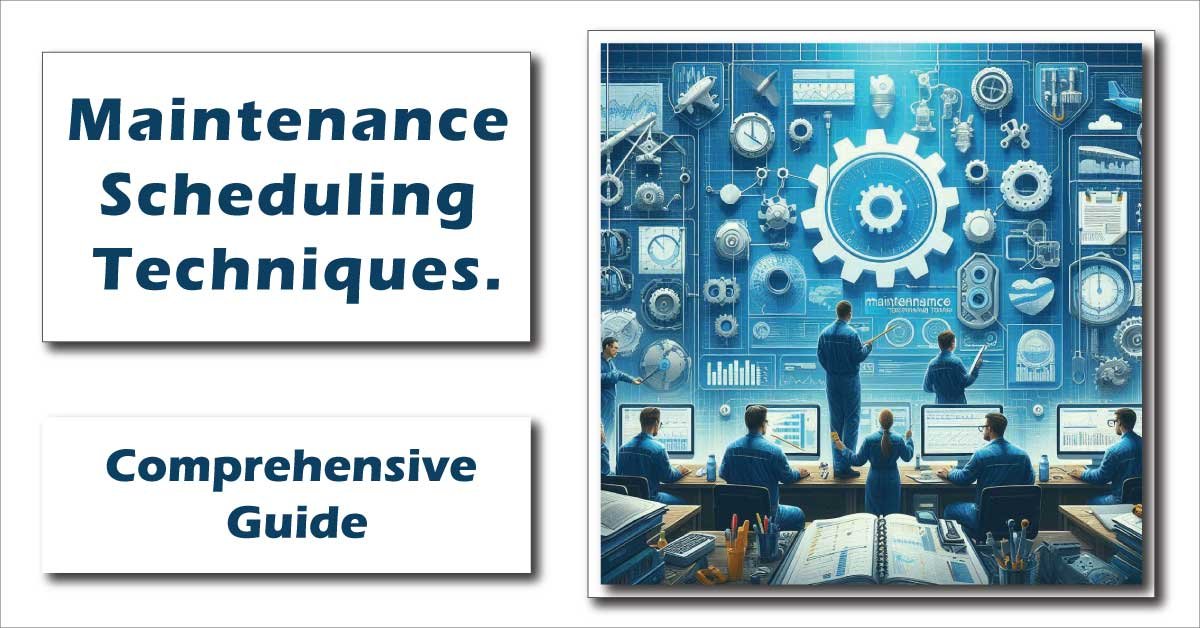Maintenance Scheduling Techniques is critical for the purposes of increasing the useful life as well as the effectiveness of equipment and various systems in numerous industries. Whether operating the manufacturing plant, a fleet of vehicles, or any operational facility it is critical to understand the best way of scheduled the maintenance tasks minimizes the risk of downtime and expensive repair bills, and also maximizes the lifespan of the fixed and mobile assets. In this guide, you are going to learn to about the subject of maintenance scheduling and different approaches towards it, and gain some tips on makes your scheduling improved.
The Importance of Maintenance Scheduling
It is important to note that the scheduling of servicing is more than simply putting down a particular date on which check will be conducted. It is the process of systematically scheduling and managing activities in such a manner so as to optimise resource usage and reduce equipment and system downtime. Scheduling maintenance tasks effectively helps in achieving the following:Scheduling maintenance tasks effectively helps in achieving the following:
Preventing unexpected breakdowns: Regular maintenance can identify potential issues before they lead to significant problems.
Optimizing operational efficiency: Well-maintained equipment performs better, leading to higher productivity and reduced operational costs.
Extending equipment lifespan: Consistent maintenance ensures that machines and systems last longer, providing a better return on investment.
Key Maintenance Scheduling Techniques
To effectively manage maintenance, it’s crucial to implement the right maintenance scheduling techniques. Here are some of the most effective methods:
Preventive Maintenance Scheduling
Preventive maintenance scheduling is a technique of performing maintenance activities at the periodic time interval without any reference to the wear and tear of the equipments. This technique is used with an intention to reduce on the incidences of equipment failure. The major benefit of using preventive maintenance scheduling is that it reduces the chances of developing breakdowns frequently because machinery is always well maintained.
To implement this technique, you need to:
Analyze historical data: Understanding past failures and maintenance requirements helps in determining the optimal intervals for scheduling maintenance tasks.
Set up a maintenance calendar: Based on the analysis, create a calendar that outlines when each piece of equipment needs servicing.
Monitor equipment performance: Regularly check equipment to ensure that the preventive measures are effective and adjust the schedule if necessary.
Predictive Maintenance Scheduling
While preventive maintains uses time intervals to determine when maintenance must be done, predictive maintenance is based on real time data. This is a technique that involves the use of sensors and other monitoring tools to estimate the capability of equipment to last without developing a fault. Scheduling of predictive maintenance is very efficient since it means that maintenance is only done at necessary intervals thus minimizing on unnecessary job and time wastage.
Steps to implement predictive maintenance include:
Install monitoring equipment: Sensors and diagnostic tools are essential for collecting data on equipment performance.
Analyze data trends: Use the data collected to identify patterns that indicate potential failures.
Schedule maintenance accordingly: Perform maintenance only when the data suggests that a failure is imminent.
Condition-Based Maintenance Scheduling
The other common strategic technique in maintenance management is condition based maintenance scheduling which involves working with actual condition of equipment as opposed to time related periods. This method is effective in such a way that the customer chooses to do the maintenance depending on the condition of the equipment.
Key steps for condition-based maintenance include:
Regular inspections: Conduct routine inspections to assess the condition of equipment.
Use condition monitoring tools: Tools like vibration analysis, thermography, and oil analysis can provide insights into the health of machinery.
Schedule maintenance: Perform maintenance when the condition monitoring tools indicate that the equipment is deteriorating.

Strategies for Effective Maintenance Scheduling
It is for this reason that maintenance scheduling cannot be a one-ticket solution but has to involve some techniques and strategies that will make the tasks have to be accomplished smoothly without necessarily interfering with productivity. Here are some strategies that can help:
Prioritize Tasks
Not all maintenance tasks are of equal importance. Some are critical to the operation of the facility, while others can be delayed without significant consequences. Prioritizing tasks based on their urgency and impact on operations is a crucial maintenance management technique.
Categorize tasks: Divide tasks into categories such as critical, important, and non-essential.
Allocate resources accordingly: Assign more resources to critical tasks to ensure they are completed on time.
Review priorities regularly: As operations change, so too might the priority of certain tasks. Regularly reviewing and adjusting priorities ensures that your maintenance scheduling remains effective.
Use Maintenance Scheduling Software
With increase in development, it’s culture to implement the maintenance scheduling software in most industries. Such tools assist in managing the time table, tracking maintenance tasks and reporting the same as well. Predictive scheduling of maintenance can go a long way towards enhancing the operations of your maintenance.
Choose the right software: Look for software that fits your specific needs, whether it’s a comprehensive system for a large facility or a simpler tool for a smaller operation.
Integrate with existing systems: Ensure that the software can be integrated with your existing systems for seamless operation.
Train your team: Proper training on how to use the software is essential for maximizing its benefits.
Develop a Maintenance Plan
A well-thought-out maintenance plan is the foundation of any successful maintenance program. This plan should outline the goals, procedures, and schedules for all maintenance activities. Developing a maintenance plan involves several steps:
Assess current operations: Evaluate the current state of your equipment and identify any gaps in your maintenance processes.
Set clear objectives: Determine what you want to achieve with your maintenance program, whether it’s reducing downtime, extending equipment life, or improving safety.
Create a detailed schedule: Based on your objectives, develop a schedule that outlines when and how maintenance tasks will be performed.
Wondering what is engine maintenance, what are engine maintenance tips, or what does engine maintenance required? Our comprehensive guide explains everything from the basics of engine upkeep to expert advice on maintaining peak performance. Explore the full article to gain a complete understanding and ensure your engine stays reliable and efficient.

Best Practices for Scheduled Maintenance
Implementing best practices in scheduled maintenance ensures that your maintenance operations run smoothly and efficiently. Here are some of the best practices to consider:
Regularly Review and Update Schedules
Maintenance requirements can also shift with time as equipment wears out, or as the load it has to carry changes or the technology employed in the equipment evolves. It helps because after sometime you have to revise your maintenance schedules to ensure that they are relevant and functional.
Conduct periodic audits: Regular audits of your maintenance operations can help identify areas where schedules need to be adjusted.
Stay flexible: Be willing to adjust schedules as needed to accommodate changes in operations or equipment condition.
Keep detailed records: Maintain detailed records of all maintenance activities to track performance and identify trends.
Balance Preventive and Predictive Maintenance
Both preventive and predictive maintenance have their advantages, and the best approach often involves a balance of the two. By combining preventive vs. predictive maintenance strategies, you can ensure that maintenance is performed both regularly and as needed, optimizing your overall maintenance efforts.
Use preventive maintenance for critical equipment: For equipment that is essential to operations, regular preventive maintenance can prevent unexpected failures.
Implement predictive maintenance for high-cost assets: For expensive equipment, predictive maintenance can reduce unnecessary maintenance and lower costs.
Document and Analyze Maintenance Activities
Documentation is a key factor in most of the maintenance management strategies. Documentation of all activities that are performed will enable one to evaluate progress, problems, and make the right decisions on maintenance.
Maintain a maintenance log: Record all maintenance tasks, including the date, type of maintenance, and any issues encountered.
Analyze data to identify trends: Regularly review your maintenance records to identify patterns or recurring issues.
Use data to improve scheduling: Use the insights gained from your data analysis to refine your maintenance scheduling techniques.

Maintenance Scheduling Examples and Case Studies
Understanding how maintenance scheduling techniques are applied in real-world scenarios can provide valuable insights. Here are some maintenance scheduling examples from different industries:
1- Manufacturing Industry
In manufacturing, schedule of maintenance is important in order to enhance production. For instance, one can look at a manufacturing company that adopted both preventive and predictive maintenance techniques. Maintenance scheduling software to address the equipment performance and task scheduling helped the factory to decrease the equipment downtime to 15% and increase the life of its factory plants.
2- Aviation Industry
The aviation industry relies heavily on scheduled maintenance best practices to ensure the safety and reliability of aircraft. Airlines typically use preventive maintenance scheduling to perform regular checks and repairs on their fleet. By adhering to strict maintenance schedules, airlines can minimize the risk of in-flight failures and ensure passenger safety.
3- Healthcare Industry
In the healthcare sector, there are planning methodologies on how to maintain the medical equipment with a view to making them work at their best always. Hospitals often use maintenance scheduling techniques to schedule regular inspections and servicing of critical equipment like MRI machines and ventilators. This ensures that the equipment is always ready for use and reduces the risk of equipment failure during critical procedures.
Conclusion About Maintenance Scheduling Techniques
An important factor in use of equipment’s and machinery in any organization is that maintenance scheduling techniques should be master. By applying culture of maintenance planning and control, such as, preventive maintenance schedule, mainly preventive, condition-based and predictive maintenance, you will achieve higher efficiency of your maintenance activities, less downtime and longer life of your assets. One has to ensure that he or she does the following in order to get the best results: always prioritize on doing the tasks, get a schedule for the maintenance and lastly adhere to the set guidelines for the scheduled maintenance.
It is, therefore, possible to set up a maintenance schedule that caters for your business operations and at the same time optimise the efficiency and effectiveness of the equipment being used. From manufacturing industries, aviation, healthcare to any other firms or organizations, proper planning and scheduling in maintenance process is the most crucial factor towards sustainable production in nearly all organizations.
Discover Mech Forged for in-depth resources on mechanical maintenance, tool types, and troubleshooting techniques. Our site offers valuable insights and practical guidance to help you excel in the mechanical field.

